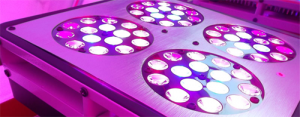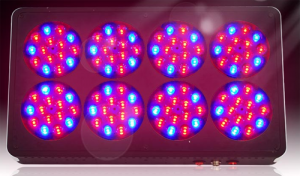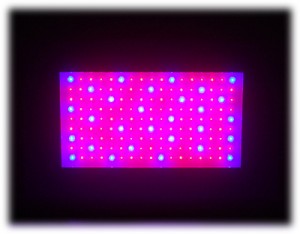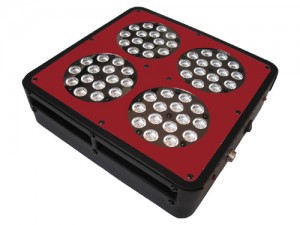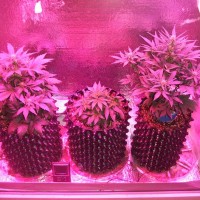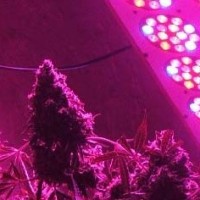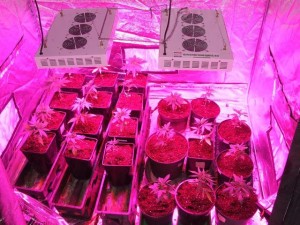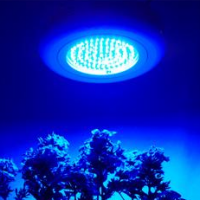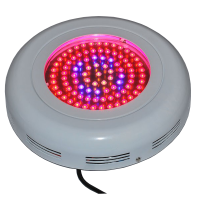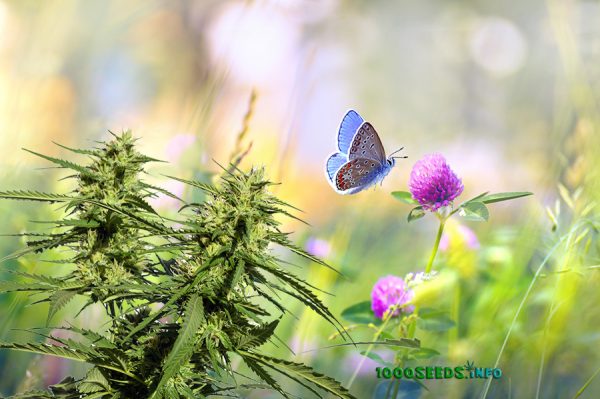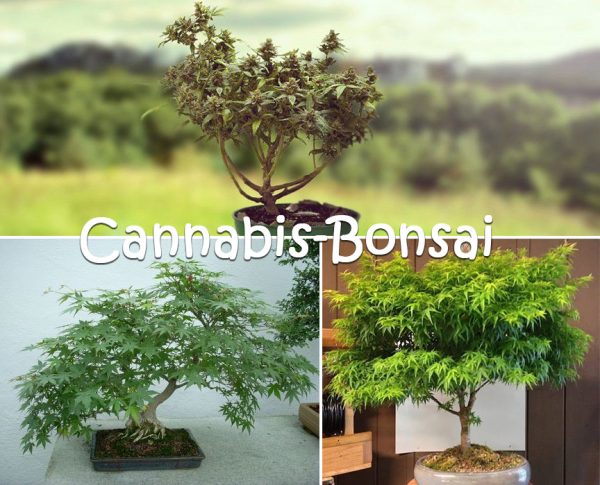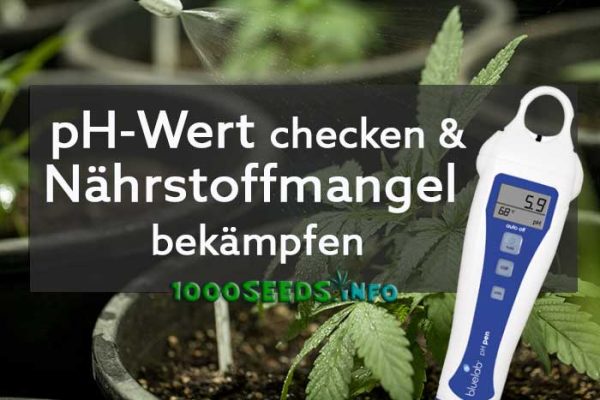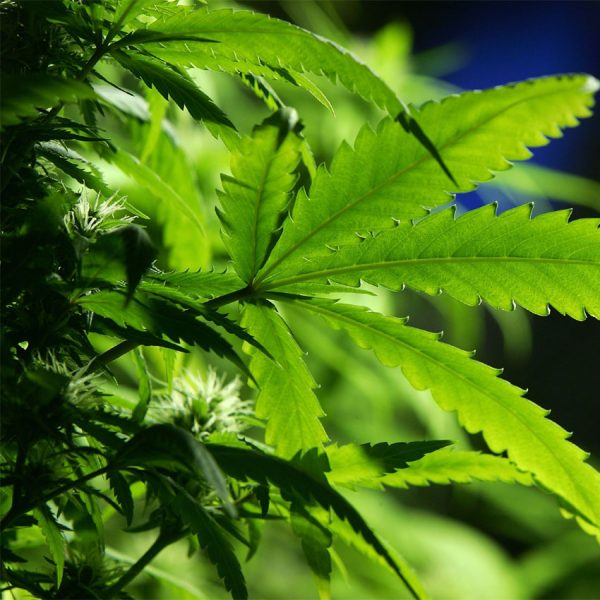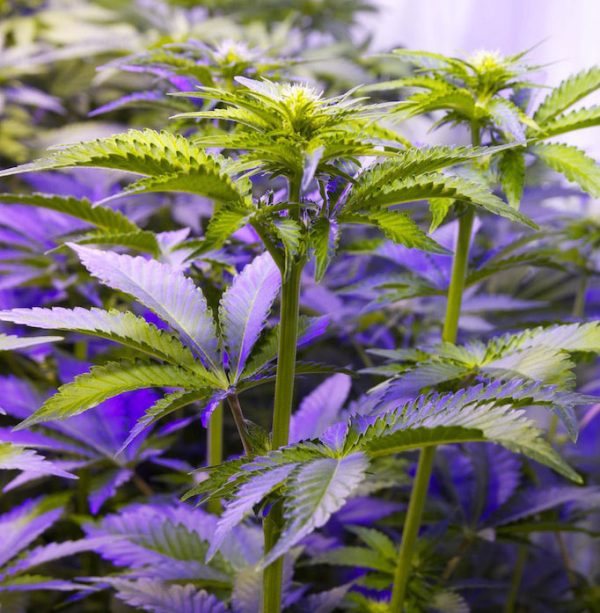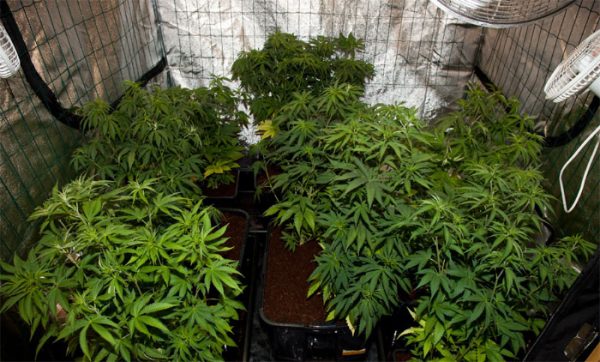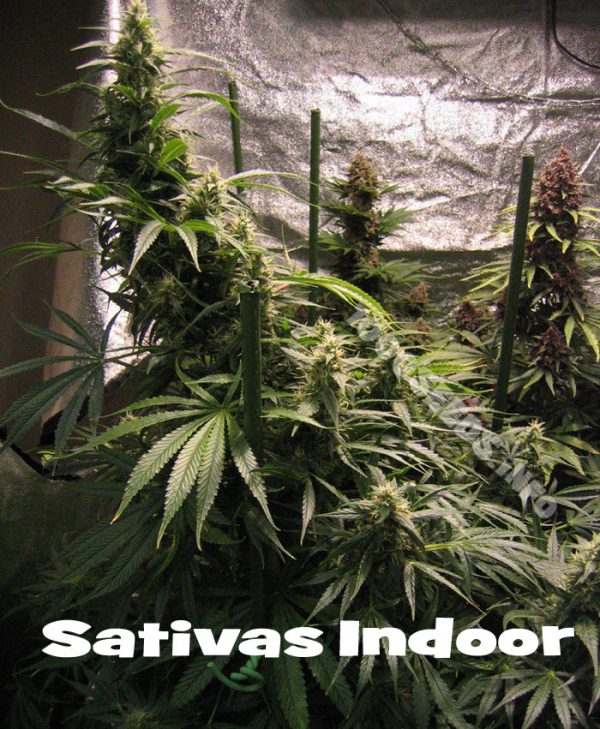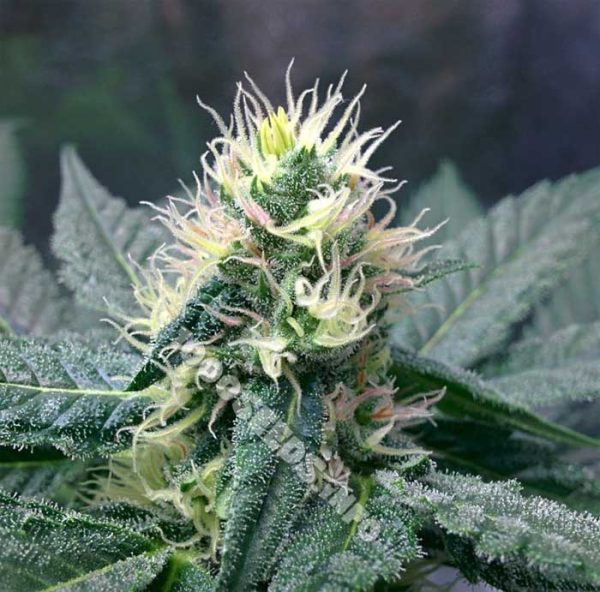LED, three letters that divide the grower world. On the one hand, LED lamps are demonised by some and rejected as too expensive, on the other hand, they are becoming more and more popular and, especially from the USA, pictures are coming in more and more often showing plants with monstrous buds under LEDs. So it's time to no longer withhold my opinion and experiences with this innovative new lighting technology.
LEDs were invented in Russia in the mid-1920s, so many years have passed before they were used. In the meantime, manufacturers are bringing LED lamps onto the market that are even precise and powerful enough to illuminate a growroom on their own.
LED plant lamps produce a different light spectrum than conventional lamps. The energy is almost exclusively converted into light that can be used by plants, whereas with sodium vapour lamps, for example, almost 90% fizzles out as heat or an unusable spectrum without this energy actually reaching the plants.
LEDs will play an even greater role in growrooms in the future than they have in the past. Light is specified in units of measurement such as wattage, lumen or lux. In connection with LEDs, PAR (photosynthetically active radiation) appears as the nominal value. PAR refers to the value for the amount of usable light that a lamp can produce. Scientists and botanists have found that PAR values are higher at the ends of the visible spectrum, i.e. at the blue and red frequencies of light. (The basic PAR range covers the main part of visible light from about 380-750 nanometres).
Advantages
- LED lamps only need about 1/5 of the energy than sodium vapour lamps
- Tests have shown that the 90W LED UFO lamp can produce as many lumens as a 400W mercury vapour lamp (MH lamp). So this is a huge saving in power consumption and electricity costs.
- Leds generate much less heat than sodium lamps, for example. Accordingly, they are not visible with thermal imaging devices and do not require industrially strong ventilation to regulate the temperature in the growroom.
- The latest models have integrated fans to cool the LEDs. This way, a much weaker ventilation is sufficient to keep the temperature in the growroom at an optimal level.
- LED diodes can be composed of their colour spectrum in such a way that they are ideal for cannabis plants. Such a precise adjustment of the light spectrum is not possible with sodium vapour lamps, for example.
What about the costs?
Each small LED costs the manufacturer about 8-9 €. So when we have 90 LEDs in a lamp, things start to get expensive. However, this is offset again by the much lower electricity costs of LEDs or by their increased efficiency. Thus, the purchase costs are already recouped after about one year of use.
Possible applications
The LED lamps can be used excellently as a supplement to other lamp types and thus compensate for an existing deficiency in the light spectrum. There are LED plant lamps especially for the growing phase (blue light), for the flowering phase (red light) and LEDs with a mixed spectrum that can be used for both phases.
The combination of a 400W NDL together with a 100W LED lamp leads to higher yields than growing with a 600W sodium vapour lamp. While LEDs were initially used exclusively as supplementary light, it is becoming increasingly clear that, thanks to developments in recent years, they can also be used as the only light in plant cultivation. When comparing 2 grows under the same conditions, scientists found out that the high-quality LEDs produce only 20% less yield with considerably lower power consumption. (LED 200W against NDL 600W).
Especially with LED lamps, quality plays an important role and is a decisive factor for performance and results. There are sometimes considerable differences. We have only the most efficient lamps with high-quality LEDs in the shop.We have included a number of lamps that are optimised for plant cultivation.
LED lamps have now become affordable. So it can get bright in the future for indoor growing.






